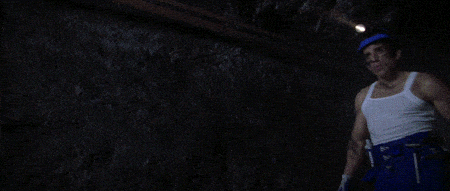The #1 Way to 10x Your Company's Odds of Success (Part 1 of 2)
The most important lesson I learned from starting two companies. Assume your idea won't work and quickly use data to prove yourself wrong.

👋🏽 Welcome to A Founder’s Life for Me! I’m Alek, and I’ll share my experiences building tech companies to provide practical recommendations on building your own thing.
Subscribe to get free access to all past and future posts.
Why I’m writing about this now
The secret to improving your company’s odds of success comes down to this core principle… directly address risks with rapid experimentation.
Rapid experimentation can apply to big decisions (i.e., “When do I start building?”) and smaller ones (i.e., “Should I add this feature?”).
As I look back over the last year, I know I’ve improved at building rapid experiments, but I also know I have a lot of room to grow. Whether you’re validating a startup idea or working on a presentation for a client, I hope that by reading this, you save yourself valuable time and money.
Blind faith marries profound skepticism.
As a founder, you want to believe, “This idea will work.” But, the better way to work is to make your default assumption, “This idea WON’T work.” To do this effectively, you need to think like a scientist.
In statistics, the term “null hypothesis” effectively means your default answer. The burden is on you to prove, with data, that your “alternate hypothesis” is true. In my experience, you need to assume, “This idea WON’T work,” and prove yourself wrong before investing your limited resources.
Not every idea is a gold mine.
Imagine you are strolling through your yard, and you notice a glimmer peaking through the grass. “Gold!” you shout, as you excitedly run back inside. Over the next few days, after you get home from work, you study up on running a gold mining operation, purchase mining equipment, and hire contractors to help dig.
After a few weeks of mining, you’re ready for your first shipment. You load up your new truck and drive to the buyer you have lined up. “I can’t buy this!” they exclaim, “This is pyrite, not gold!”
If you build it, they will come!
I was sitting at my desk in my apartment in San Francisco, playing a game on my computer with some friends. “I wonder what the best move in this situation is?” I wondered. “It’d be cool if I had data that helped me make the right decision.”
Over the next few months, after getting home from work, I spent hours researching computer vision technology, bought a new computer to develop it, and hired some contractors to help. I talked to friends who all said, “This idea is awesome,” and my excitement grew. I’m going to be rich!
The website was up and running after a few months of hard work. I fired social media posts and ads across platforms. I watched my website traffic. “Here they come!” I thought. But, nobody came. After all that hard work, I got two sign-ups over the next month, and their feedback was middling.
The importance of rapid experiments.
In both of the stories above, the “null hypothesis” was “this idea will work.” And there was no proof that the idea was worth pursuing. The end result was wasted time, money, and effort. In the case of my first startup, I did get to a point where people used the product. However, I wasted a ton of time and money because the final concept was so different from where I started.
Every new endeavor has a limited runway.1 If you’re working on an idea in your free time, your runway is limited by your time and patience. When there are other stakeholders involved (i.e., your family, investors, employees), there are financial obligations you need to meet, too. To succeed, you need to find an idea that will work before you run out of runway.
Your first idea isn’t always going to work. It can take 5, 10, 20, or more iterations of an idea to reach one that will work well enough for your business to “take off.” And, if you hit the end of your runway before you find “the idea that works,” then you’ve lost.2 So, you need to get through idea experiments as quickly as possible to maximize your chances of success. The best way to do this is by maximizing your confidence that an idea will work with minimal effort (a.k.a. a rapid experiment).
Applying rapid experiments.
For my current startup, SolidlyAI, I’ve designed rapid experiments to directly address risks and get through idea iterations 10x faster than I did with my prior startup. The main risks for Solidly were:
As a solo founder, I won’t enjoy building the product full-time by myself.
As a solo founder, I don’t have the skills to build it.
As a solo founder, I won’t be able to meet my financial obligations/goals.
People won’t want to buy it.
Risks #1 and #2: My first experiment was to “Code a prototype full-time for one week.” From this, I learned that I enjoyed coding as a full-time activity and was good enough at it to build what I wanted.
Risk #3: As a thought experiment, I did some number crunching. I had enough in my bank account to cover six months of expenses. I gave myself three months of freedom to work on SolidlyAI full-time. After that, if Solidly didn’t ‘take off,’ I’d split my focus and spend time looking for other ways to meet my financial obligations. So, I allowed myself to put the risk out of my mind, and I’d revisit it later.
Risk #4: I needed to design a quickly executable experiment to understand whether people would buy Solidly. So, I spent another week getting a highly simplified version of the app up and running. I started marketing it and quickly saw a steady stream of daily usage. Usage is just the first hurdle, and usage doesn’t mean people will pay for the application. So, there was still more experimentation to do.
However, new risks emerged, and OpenAI’s ChatGPT was taking off in parallel. Quickly, usage dropped off because people had found a better alternative to the simple value proposition that Solidly originally solved. So, the feedback loop started again. I assessed the new risks, developed efficient experiments to address them, and then executed them!
Your turn! Applying rapid experiments.
If you have an idea, the key to success is to find ways to validate whether or not it will work as quickly as possible. Building these rapid experiments allows you to get through the “bad” versions more rapidly and land on the one that works.
Recommendation: Think about a significant workstream that you are working on. Spend five minutes outlining the risks and brainstorming at least three experiments to address these risks. Your goal should be for these experiments to take less than ten percent of the total time that the workstream would take. If the workstream takes ten days to execute, develop an experiment that mitigates the risk in one day. Do that first.
In my next newsletter, I’ll share my favorite strategies for designing experiments. If you’re interested, please subscribe through the link below.
“Runway,” in startup speak, means “there is a limited amount of a resource we can burn before an idea ‘takes off.’” Think of a plane trying to take off… the runway doesn’t go on forever. It needs to get enough speed before it reaches the end of the runway, or it crashes.
I’ll talk about strategies for extending your runway in a later post. But, for the sake of this discussion, let’s assume your runway isn’t changing.



